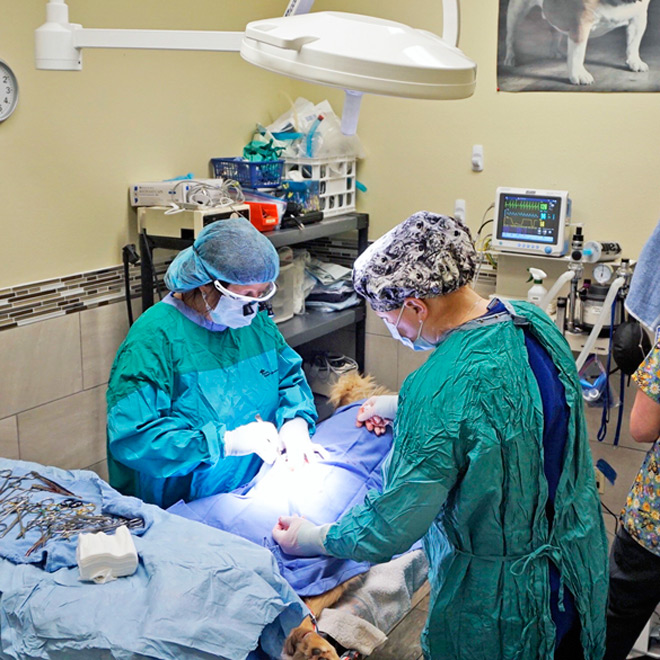Pyometra Treatment
Almost no word can strike more fear into a breeder than Pyometra.
 Pyometra is a secondary infection that occurs as a result of hormonal changes in the female’s reproductive tract. During the female’s heat cycle- (estrus), white blood cells, which normally protect against infection, are inhibited from entering the uterus. White blood cells can attack the sperm, potentially preventing a successful breeding. Following the heat cycle, progesterone hormone levels can remain elevated up to two months. This can cause the thickening of the lining of the uterus- which is normal when the female is preparing for a pregnancy and the development of the fetus. If the female does not become pregnant (whether the pet is not bred, or if breedings fail) for several heat cycles, the uterine lining continues to increase in thickness until cysts often form within the tissues The thickened, cystic lining may secrete fluids that create an ideal environment for bacteria to grow in.
Pyometra is a secondary infection that occurs as a result of hormonal changes in the female’s reproductive tract. During the female’s heat cycle- (estrus), white blood cells, which normally protect against infection, are inhibited from entering the uterus. White blood cells can attack the sperm, potentially preventing a successful breeding. Following the heat cycle, progesterone hormone levels can remain elevated up to two months. This can cause the thickening of the lining of the uterus- which is normal when the female is preparing for a pregnancy and the development of the fetus. If the female does not become pregnant (whether the pet is not bred, or if breedings fail) for several heat cycles, the uterine lining continues to increase in thickness until cysts often form within the tissues The thickened, cystic lining may secrete fluids that create an ideal environment for bacteria to grow in.
Although pyometra is most common in older dogs, it can occur in young and middle aged dogs as well, typically two to eight weeks following their heat cycle.
Symptoms of pyometra may vary widely depending on numerous factors- with the biggest factor being whether or not the cervix is open or closed. If the cervix remains open, then owners will likely see pus draining from the uterus through the vagina and onto their fur- furniture or wherever they sit or lay down. The pet may also experience fever, lethargy, anorexia (unwillingness to eat) and depression. Some, all or none of the these outward symptoms may be seen.
If the cervix is closed, the infection is unable to drain. This usually leads to pus collecting in the uterus, and the abdomen becomes distended. The bacteria, having no place else to escape begin releasing toxins that wind up in the pet’s bloodstream. Once these bacteria enter the pet’s bloodstream, they will become very ill in a very short amount of time. They will not eat, will be lethargic and may experience vomiting and diarrhea.
In both cases- either with a closed or open cervix, increased thirst and urination is likely and is an added symptom of pyometra.
If a pet is diagnosed with pyometra, the best course of action is to remove the uterus and ovaries. Naturally, if a ovariohysterectomy (spay) is performed, this ends the ability to breed. This is necessary, in most cases, to ensure the life of the pet.
There are other potential treatments for the medical management of pyometra which we can discuss with you during our appointment.
If your pet has had a recent heat cycle and is showing any of the symptoms described, contact your veterinarian immediately.


 Tap to Call Now
Tap to Call Now